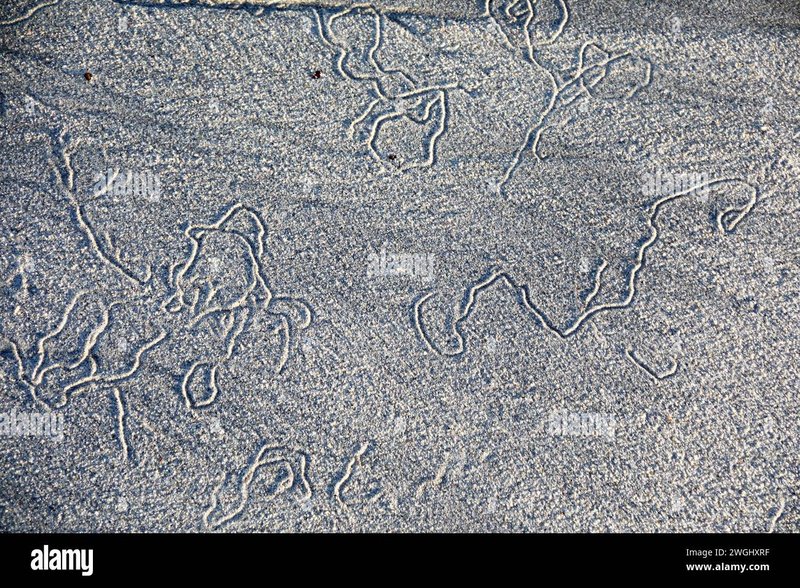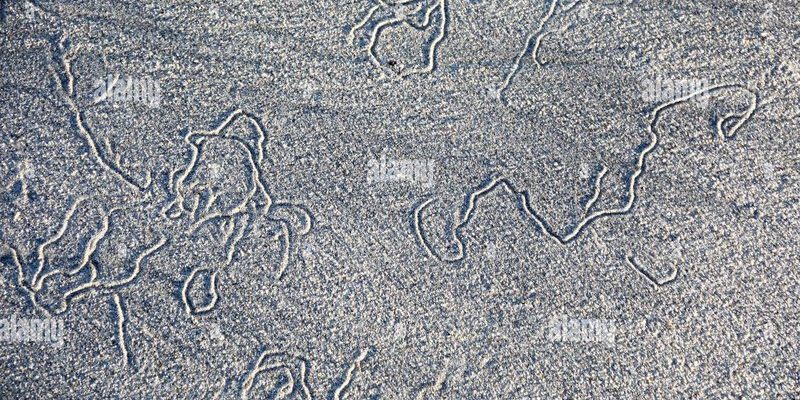
Bootlace worms, scientifically known as *Lineus longissimus*, can be quite the showstoppers when it comes to what they leave behind. It’s like nature’s own little art display. So, let’s dive into how to recognize these trails and what they can tell us about their slippery, intriguing inhabitants.
What Are Bootlace Worms?
Bootlace worms are fascinating creatures that can reach impressive lengths, sometimes over 30 meters! They belong to a group called nemerteans, or ribbon worms, and are known for their long, ribbon-like bodies. If you’ve seen one of these worms, you probably couldn’t help but marvel at how slender and flexible they are.
Now, you might be wondering what makes these worms so interesting. One standout feature is their ability to regenerate. If a bootlace worm loses a part of its body, it can grow back! This intriguing ability adds an extra layer of complexity to these remarkable creatures and helps them survive in various environments, particularly the muddy and sandy shores where they often dwell.
Understanding what bootlace worms look like helps when you spot them or their trails. They’re typically a brownish color and have a smooth, slippery texture. If you’re curious about identifying trails, keep an eye out for the telltale signs they leave in wet sand.
Identifying Bootlace Worm Trails
When it comes to recognizing bootlace worm trails, it’s all about observation. The trails they leave are usually long and sinuous, resembling wavy patterns in the sand. If you’ve ever seen a wave curling in slow motion, you’ll get a sense of how these trails curve and undulate.
Another interesting thing about these trails? They often look like a series of overlapping loops, almost like a delicate, flowing ribbon. You might also notice that these trails can be quite shallow, as they don’t dig deep into the sand. Instead, they glide along the surface, leaving behind a whisper of their presence.
When you spot a bootlace worm trail, focus on the details. Are the curves smooth or jagged? Do you see any split paths? These characteristics can provide clues about the worm’s behavior and movement. For instance, smoother curves may indicate slow, steady locomotion, while jagged trails could suggest a quicker escape.
Why Do Bootlace Worms Leave Trails?
The trails left behind by bootlace worms aren’t just random; they serve several important purposes. First and foremost, these trails are a result of locomotion. Bootlace worms use a unique method to move, relying on the secretion of mucus to help them glide over the sand—very much like a slippery, underwater rollercoaster ride.
Additionally, these trails can help the worms hunt for food. Bootlace worms are carnivorous, feeding mainly on small marine creatures like crustaceans. When they move through the sand, they might leave behind pheromones in their trails, which can attract other organisms. So, if you see a particularly active trail, it might mean the worm is on a dinner quest!
Moreover, the trails can serve as a sort of camouflage. The patterns might confuse predators, helping the worm to remain hidden in its sandy environment. Nature has a clever way of ensuring survival, doesn’t it?
Where Can You Find Bootlace Worm Trails?
If you’re eager to see these mesmerizing trails in action, your best bet is to hit the beach during low tide. That’s when the sand is exposed, providing perfect conditions for identifying bootlace worm trails. Look for areas with damp sand—just after the waves recede is ideal for this.
While bootlace worms can be found in various coastal regions, they often thrive in muddy or sandy habitats with abundant organic matter. Areas near estuaries or tidal pools are prime spots to find them. If you’re exploring a beach that has a diverse ecosystem, you’re more likely to stumble upon these fascinating creatures.
As you wander along the shoreline, keep your eyes peeled for not only the trails but also other marine life. Who knows what else you might uncover! Maybe you’ll find interesting shells or even witness other types of sea creatures leaving their marks in the sand.
Common Misidentifications
When it comes to observing bootlace worm trails, it’s easy to confuse them with other markings left by marine life. For instance, you might see trails made by mollusks or other types of worms. Understanding the differences can help you appreciate the unique nature of bootlace worm trails.
If you spot a more linear trail with a consistent width, it might belong to a different type of worm, like a bristle worm. These often have a more textured appearance compared to the smooth, flowing trails of bootlace worms.
Also, look out for shellfish tracks. These usually appear more sporadic and less organized than bootlace worm trails. They can create curvy paths too, but typically have a chunkier appearance due to the shells that detach while they move.
Ultimately, taking your time to observe the nuances in these trails will enhance your beach exploration experience. Plus, it’s a great opportunity to learn more about the local ecosystem!
How to Preserve Bootlace Worm Trails
If you’re lucky enough to spot a bootlace worm trail, it can be tempting to try and preserve it, especially for educational purposes or simply to share with friends. However, it’s important to tread lightly—pun intended! Disturbing these trails too much can damage their delicate structure, which might mean losing valuable information about the creature’s habits.
One way to respectfully preserve a trail is by taking photographs. This allows you to capture the moment without causing harm. Make sure to focus on the details—try different angles and distances to get a clear view of the trail’s patterns. That way, you can come back to it later, study it, and even share your finds with fellow nature enthusiasts.
If you’re feeling particularly inspired, consider drawing the trail in a notebook. This creative approach can help you connect with nature while enhancing your observation skills. Plus, it might even spark more curiosity about marine life!
From the mesmerizing patterns they leave behind to the depth of their regeneration abilities, bootlace worms truly are remarkable creatures. Identifying bootlace worm trails in wet sand is not just about spotting a curious squiggle; it’s about appreciating the delicate interconnectedness of our coastal ecosystems.
Next time you find yourself at the beach, take a moment to look down. Those tiny, intricate trails may lead you into a whole new world of discovery. Embrace your inner explorer, and let the sand’s secrets guide you through the beauty of nature. After all, every little trail tells a story.

